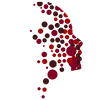Your Speech Pathologist has determined that you are at a very high risk for food material “going down the wrong way” and entering your lungs. This is why you are required to use a feeding tube. Despite this, your SLP has determined that you are appropriate for “therapeutic feeding” which will allow you to eat very limited amounts by mouth and help to transition back to oral eating.
The benefit of therapeutic feeding allows you to experience limited oral intake while exercising the muscles of swallowing. This allows for a degree of oral gratification from your current NPO status (nothing by mouth), as well as serve to provide some gradual strengthening and rehabilitation of the weakened musculature. This will augment your office-based therapy with the potential for speeding your overall recovery. For this reason, it’s very important to follow this protocol.
Your SLP will advise you if you are allowed cold food/liquid. It’s always advised to avoid cold food/liquid for the first 3-4 months following surgery where there has been flap reconstruction. You will be cleared by your doctor or SLP for cold foods.
The benefit of therapeutic feeding allows you to experience limited oral intake while exercising the muscles of swallowing. This allows for a degree of oral gratification from your current NPO status (nothing by mouth), as well as serve to provide some gradual strengthening and rehabilitation of the weakened musculature. This will augment your office-based therapy with the potential for speeding your overall recovery. For this reason, it’s very important to follow this protocol.
Your SLP will advise you if you are allowed cold food/liquid. It’s always advised to avoid cold food/liquid for the first 3-4 months following surgery where there has been flap reconstruction. You will be cleared by your doctor or SLP for cold foods.
What and How to Eat
Only eat TWO OUNCES of pudding per session. These sessions should be conducted four times per day. If you purchase prepackaged pudding, each session you will eat ½ container. You will go through two containers per day. The flavor of these does not matter but it must be SMOOTH pudding (not rice, bread or tapioca puddings).
Follow these instructions for eating:
- Swallow ½ teaspoon of Pudding per Bite
- Swallow Each Bite 3 Times
- Follow with 1 teaspoon of Liquid, by Spoon
- Cough
- Repeat
Any difficulty with this should be reported to the SLP staff so they can make appropriate changes and ensure the safety of your swallowing.
Remember, this is your treat AND your homework!

